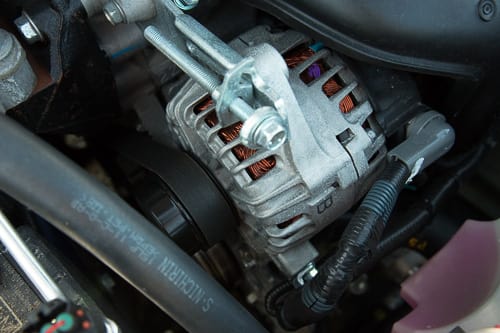
By Rick Popely, Cars.com
A vehicle's alternator generates the power that charges the battery, and when that power flow slows to a trickle or stops, you will be unable to use its electrical accessories, or the car will just stop running.
If the alternator is the culprit, it could be because the accessory drive belt that spins a pulley on the alternator is worn and slipping. Another possibility: a bearing inside the alternator on which a rotor spins has broken. Alternators alternate between AC and DC power, and diodes that regulate this can fail from age and from long-term exposure to heat.
Sometimes you will hear alternator warning signs, such as a screeching noise from a loose or worn accessory belt or metal-on-metal scraping noises from a bad bearing.
Often, though, you will know something is up when the charging system warning light on your dashboard comes on while you're driving. This warning light is usually shaped like a battery, so your first (and most logical) inclination might be to blame the battery.
Don't be too hasty: The battery might be OK, but if the alternator can't generate the juice to recharge it, the battery eventually will run out of power, and your car will stop running. The same is true if your car won't start because the battery is dead. The root cause could be that the alternator isn't recharging the battery. Jump-starting the car will get it going, but it won't keep it going.
To find out what's happening, have a qualified mechanic test the entire charging system, including cables and connections to pinpoint the cause.
Among the early warnings that your alternator is starting to pack it in are:
- Your headlights or dashboard lights are dimmer
- The charging system light comes on when you use more electrical accessories, such as windshield wipers or seat heaters
Both of these mean that the alternator is letting you know it can't keep up with demand.



Leave a Reply